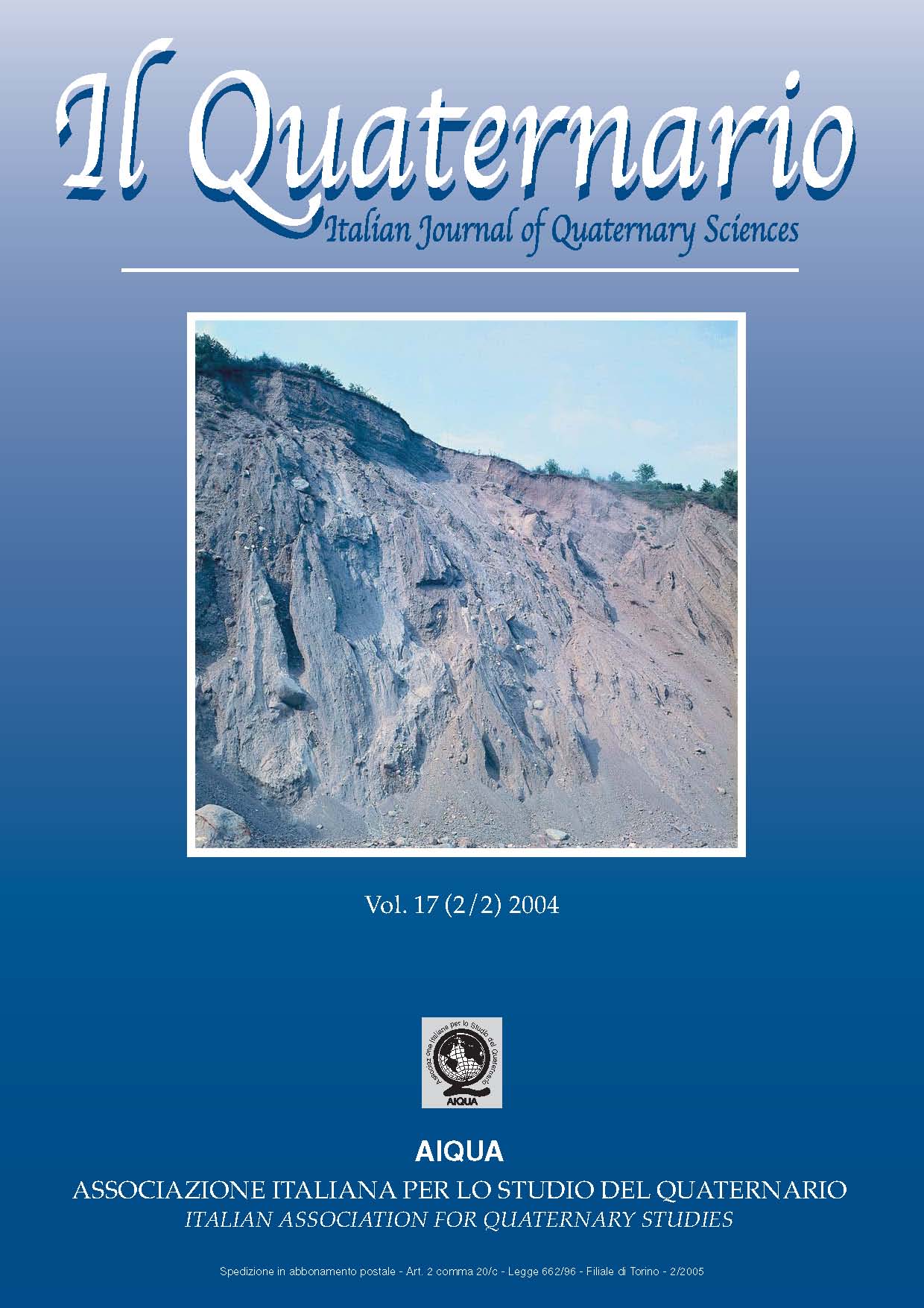CARTOGRAFIA STORICA E SISTEMI GIS PER LO STUDIO DELL’EVOLUZIONE DEI CARATTERI FISICI ED ANTROPICI DEL TERRITORIO. IL CASO DI CAPUA (CE)
Main Article Content
Abstract
E. Mingione, D. Ruberti, S. Strumia & M. Vigliotti, The study of physical and antrhopic landscape evolution thriugh historical cartography and GIS tools: the Capua (CE) case history. IT ISSN 0394-3356, 2004.
The use of G.I.S. (Geographic Information Systems) have been applied to reconstruct the landscape evolution of the Volturno River
Plain in the surrounding of Capua (southern Italy). The study has been carried out comparing historical-bibliographic, cartographic,
geologic and botanic analyses that have furnished several spatial and temporal data.
The development of Capua has been strongly conditioned by the presence of the Volturno River since its birth during the VIII-IX centuries. Most of the history of the town is well documented by maps, drawings, paintings. Some pre-geodetic maps have been selected in order to describe the major landscape modifications whichoccurred during the 500-1700 age interval. They have been analized and processed into a GIS environment. Each document has been georeferenced, rototraslated and regenerated on a referenced base map.
Geodetic maps refer to IGMI (Istituto Geografico Militare d’Italia) Topographic Maps and numerical aereophotogrammetries produced
by local governments. On the whole, the above mentioned documents are related to the 1800-1998 interval.
The map overlay evidenced major changes of the fluvial morphology. Further evidence came from a DTM (Digital Terrain Model) created on the base of the 1:2000 numerical maps. Such a detailed model highlights landscape micro-morphologies little evident on the topographic maps; this is exspecially relevant for low-relief regions such as alluvial plains.
From the above derives that, on a large scale, the present river plain setting has been conditioned by the human activities of buildings
and water-regulation plus the natural variation effects linked to climatic changes (Arcaic Little Ica Age; Middle-Age Little Ice Age; etc.).
The most important changes, infact, appear closely related to rapid and catastrophic alluvial events that repeatedly occurred in the
plain, as evidenced by the local stratigraphic record.
Where the human impact on river dynamics is limited, the fluvial morphology is substantially unchanged.
Fisionomic-structural surveys on the riparian vegetation have permitted the characterization of the local plant communities; the observations have been related to the main geological results in order to characterize the studied area in terms of environmental quality.
Article Details
Section

This work is licensed under a Creative Commons Attribution-NonCommercial-NoDerivatives 4.0 International License.
The Author grants usage rights to others using an open license (Creative Commons or equivalent) allowing for immediate free access to the work and permitting any user to read, download, copy, distribute, print, search, or link to the full texts of articles, crawl them for indexing, pass them as data to software, or use them for any other lawful purpose.

